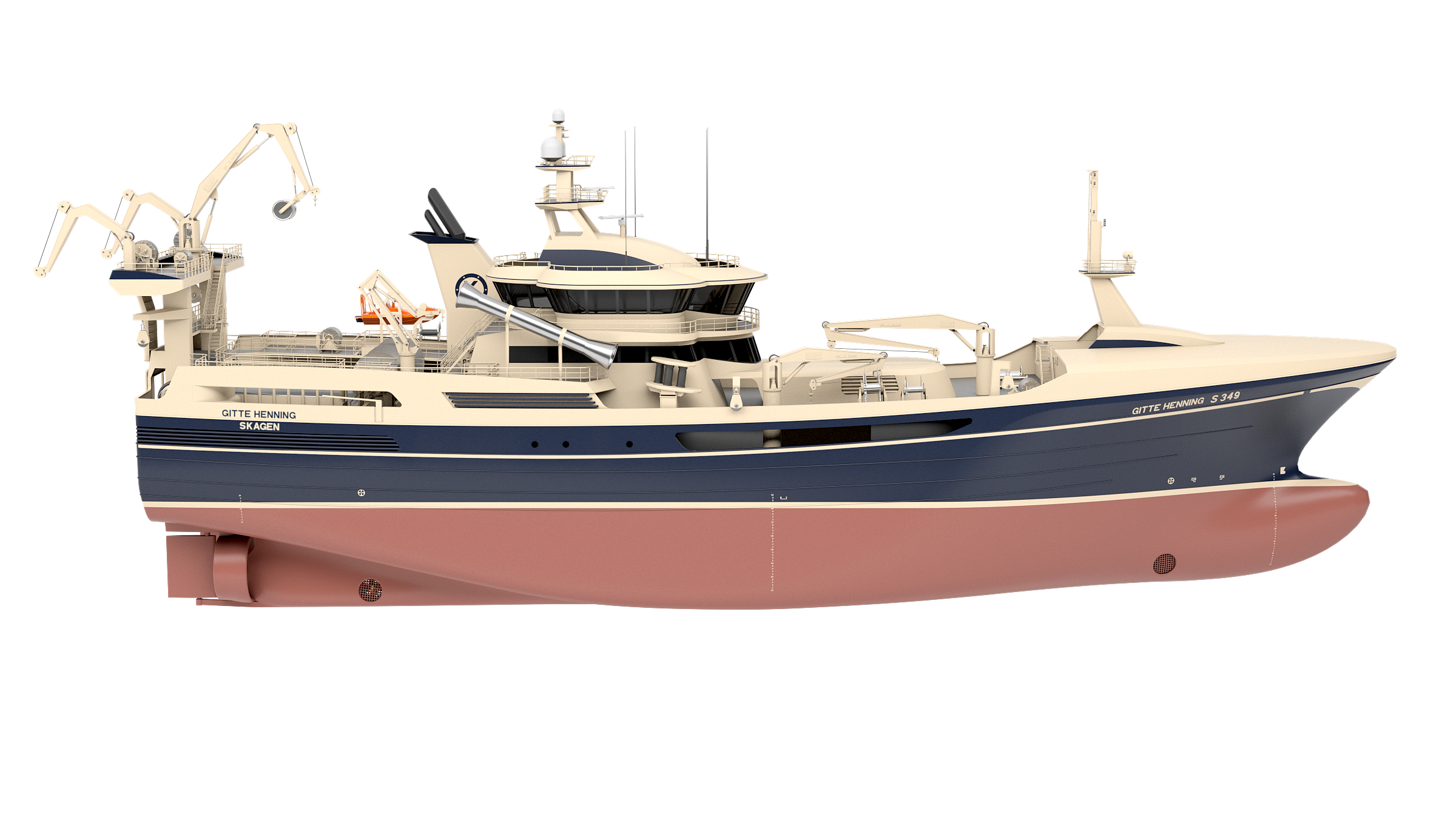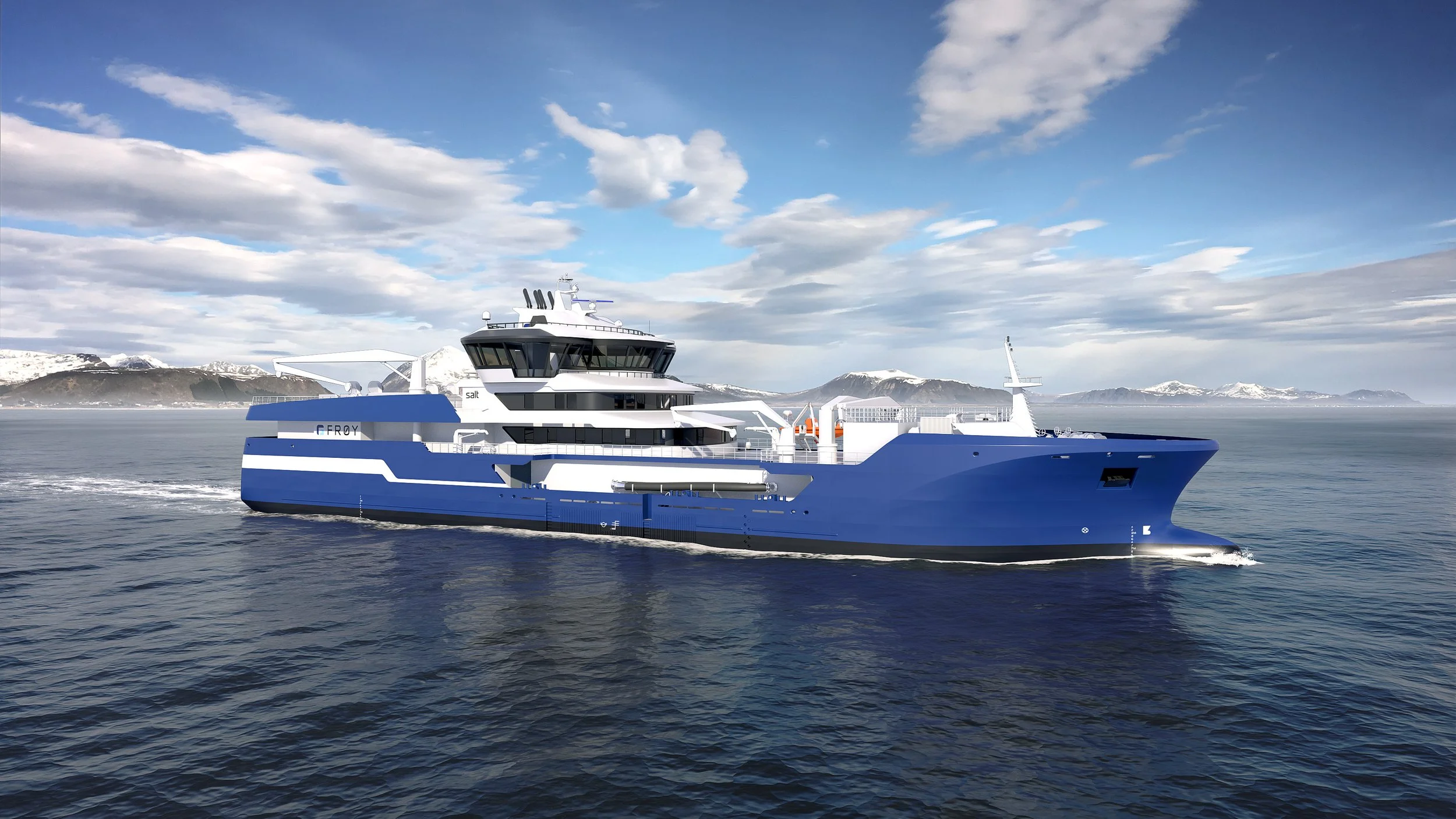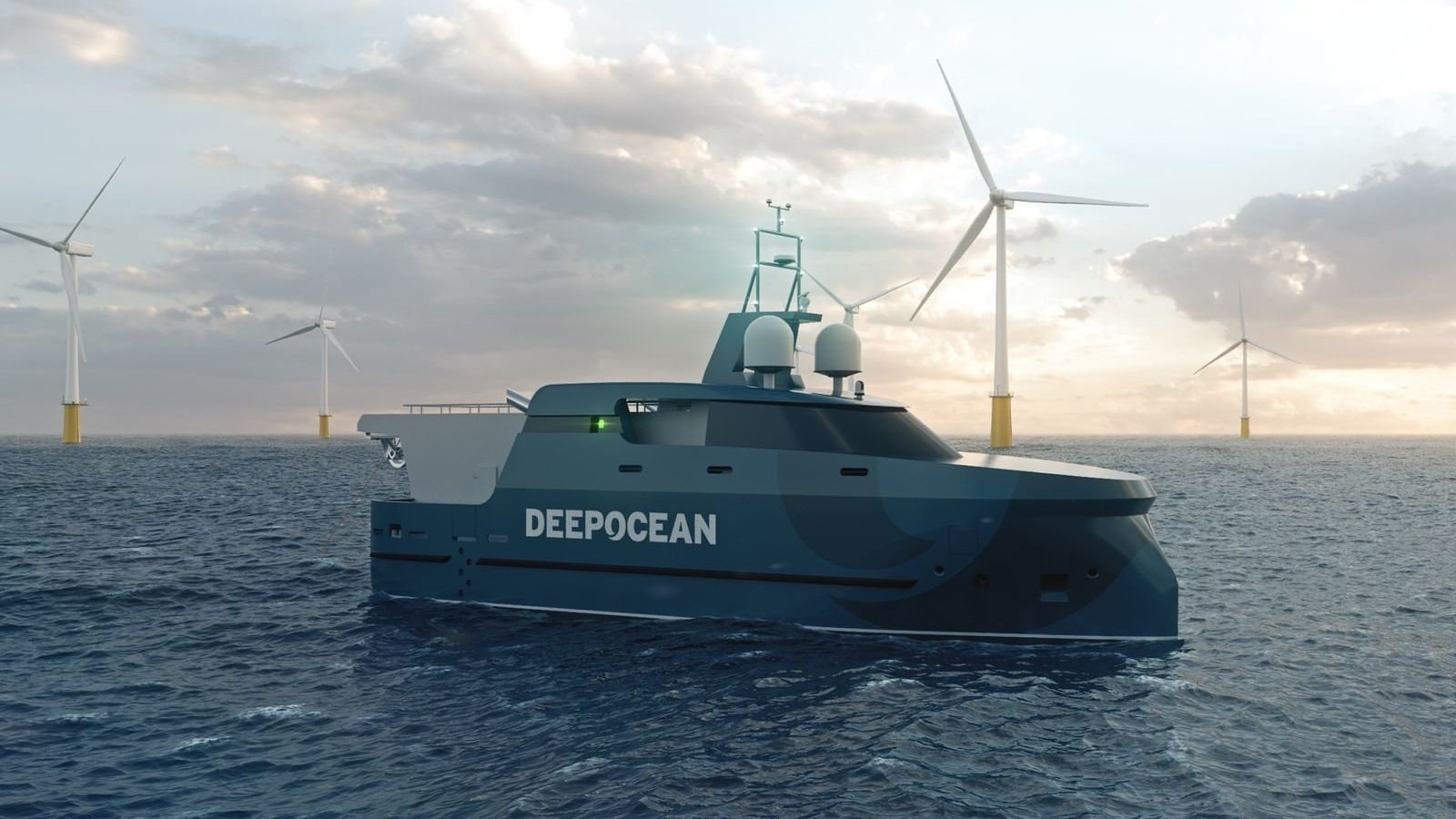GITTE HENNING fishing company is leading the way by bringing fishing in blue Denmark into a new, green age by contracting a new, environmentally friendly pelagic fishing vessel from the Spanish shipyard Zamakona in Bilbao.
Henning Kjeldsen says he initially intended to withdraw from fishing after the sale of Gitte Henning to the Faroe Islands, as well as receiving offers for all his pelagic fishing rights.
After thinking about the future, I got cold feet doing nothing, and contacted Salt Ship Design, says Henning.
Together, Henning and Salt have now designed a new, green Gitte Henning. The new fishing vessel will have a number of environmentally friendly solutions, many of them new in pelagic fishing. Throughout the design process and in the choice of equipment, the focus has been on improving quality of the fish and reducing emissions through reduced energy need consumption and efficient power savingproduction.
By ordering a new Gitte Henning it is the fourth time Henning Kjeldsen and the Sandvik family are designing a vessel together, and the second time Henning is ordering a Salt-design.
For additional information
Egil Sandvik
es@saltship.com
+47 90 85 57 26
REDUCED NEED FOR ENERGY CONSUMPTION
Propulsion and manoeuvring
The one large propeller that is common on pelagic trawlers has been replaced by two propellers and a twin-skeg hull design. Extensive flow analysis and model tests show significant improvements in terms of greater bollard pull and less fuel consumption during trawling. Large rudder angles are often needed on conventional fishing vessels to maintain course, even in moderate weather conditions.to correct for current and wind trying to pull the ship off course. Two propellers provide the opportunity to steer the ship with minimal rudder impact, which reduces additional energy requirements during sailing and trawling.
Permanent Magnet Motor (PM)
The two propellers are powered by two electric Permanent Magnet (PM) motors. This type of motor has less electrical loss and can operate significantly more efficient than conventional electric motors throughout the working areapower range than conventional electric motors - especially particularly at low engine speeds. Low propeller rpm has the following advantages:
Better propeller efficiency at typical loadloading
No need for reduction gear and thus no mechanical loss
Reduced noise
Electrical winches
All winches are also powered by PM motors for reduced loss and optimal operation. PM motors in combination with battery Electrical winches provide the opportunity to regenerate, the other vice lost, and store energy when the trawl is set. This energy is available to other consumers and can, for example, be used for propulsion or RSW (refrigerated sea water) cooling.
Conventional hydraulic winches and fishing pumps require a system with a significant amount of hydraulic oil. The risk of discharging this oil into thehydraulic oil spill to sea is eliminated by choosing electric winches.
RSW cooling and fish quality
The RSW area at the new Gitte Henning is arranged in a new way that gives inner surfaces of the RSW tanks a smooth finish with no obstructions or sharp edges.
The vessel is equipped with four independent cooling systems, with four RSW tanks per facility. This provides a more efficient cooling process by only cooling parts of the fish tank volume at the time, resulting in an optimal, energy saving cooling system.
In addition, the capacity of the vacuum system for unloading has been increased by 40% compared to normal unloading capacity.
Overall, this will provide a more careful handling of the fish that will improve quality
Electrical operation
All electric motors, from winches to pumps, are frequency controlled. This will provide a more customised energy power supply and hence reduce the overall energy consumption.
EFFECTIVE ENERGYEFFICIENT POWER PRODUCTION
Diesel Electric
Five diesel generators, located in two separate engine rooms for the best possible safety and working environment, supply the propulsion PM engines motors and all other energy consumers on board. All generators are equipped with catalytic converter (SCR) to reduce emissions and meet new and stricter IMO Tier III requirements.
The energy requirements of a pelagic trawler fluctuate widely significantly with varying weather, operational conditions, cooling requirements, speed, etc.
The number and size of generators are chosen to optimize the energy power balance based on the vessel specific operational profile and give the diesel engine optimum operating conditions and thus high efficiency.
Hybrid
To further improve the operating conditions of the diesel engines, Henning has invested in a large battery pack that support the generators when the load is high and recharges when the load is low. Regenerated power from the winches during trawling also helps to charge the battery pack.
In this way, the diesel engine will avoid not experience unwanted the large variations in load variations which in itself gives a fuel reduction of the range of ~ 10% based on the experience of other diesel electric vessels. So called ‘Peak Shaving’, i.e. the battery is ‘shaving’ the load peaks.
The batteries are located in a separate room, thus providing an additional source of emergency power in addition to the diesel generators in the two engine rooms. In addition, they will significantly reduce noise and emissions in the port.
Main Data
Length: 87.60 m
Width: 20.00 m
Generator: Yanmar
PM motors: Brunvoll
Propeller: Brunvoll
Side thrusters: Brunvoll
Winches: Evotec
Cranes: SeaQuest
Electric fishing pumps: SeaQuest
Fish Handling: C-Flow
RSW: Johnson Control
Builder: Zamakona






























